|
CONSTRUCTION
Keeping
the weight of a Solar Powered car's bodywork down is almost as important
as making sure it slides through the air gracefully. Where the
mass of the vehicle determines the rolling resistance, and the rate of
acceleration, the shape of the bodywork, determines the aerodynamic
drag, which above 25 mph can rise significantly.
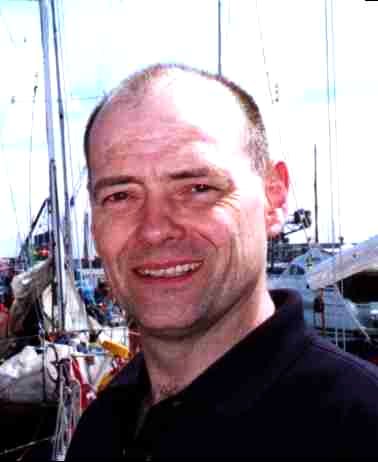
Nelson - is an electric car innovator who advocates passing skills to the
next generation of engineers and encouraging creativity. Modern car
design is largely generated on computers
without drawings. Where in the real world, marking out and cutting is
required, as in drawing full size. CAD-CAM obviates that need, such that
fabrication experience goes out the window. But that also puts up the
cost of creativity and prevents home concepts, one-offs and backyard
specials, granted that with computer design it is possible to
manufacture almost anything, enter 3D printing machines that are now
affordable.
Where
a car is a monocoque composite moulding, the body may become part of the
structure and take loads fed into the vehicle via the suspension.
This design approach may yield a lighter vehicle, which may come at a
price, where complexity and specialization may hamper roadside repairs,
etc. For
this reason, many teams opt for a separate tubular chassis, with
bodywork attached as one or two piece mouldings. The top bodywork,
is usually hinged or detachable, to enable the panels to be angled
toward the sun. Obviously, in a car that uses the shell as a
monocoque, the whole car would have to be tilted, to angle the panels
toward the late afternoon or early morning sun.

Solar
Car slipstream - turquoise = turbulent flow
AERODYNAMICS
One goal for the teams who design solar cars, is to achieve extremely low aerodynamic drag while still maintaining a suitable surface for the solar cells and adequate space for the driver and the other components. Once a design is proposed, the shape should be tested to obtain figures for drag.
Testing proposed aerodynamic shapes is generally done in one of two ways. The first is to build scale models that are tested in a wind tunnel to simulate air flow across the car. The second is to use a powerful computer program that does the same kind of air flow simulation using a computer-generated model of the car.
One objective of aerodynamic studies is the design of shapes that offer the least resistance to the flow of air. Air offers a resistance to any object moving through it. Air resistance is influenced by the shape of an object. Aerodynamics engineers study the way in which air flows around objects, but it is still somewhat a black art.
Air resistance is referred to as aerodynamic drag. If a moving object is streamlined, the air will flow around it smoothly and cause less drag, therefore needing less energy to move the object. Such a design is considered to be aerodynamically efficient. When an object produces poor airflow, more energy is required to push it forward.
INSPIRED BY NATURE
There are many examples of animals which are extremely aerodynamic, the most obvious of which are fish and birds. Birds have to be able to use the air well, in order to survive. This means generating lift with their wings and keeping their body as efficient as possible to penetrate the air, hence move forward.
Fish have the same basic problem, but do not have to generate lift. They simply have to propel themselves through a much denser liquid: water.
THE BOXFISH
The Boxfish is one example of an angular shape that is still very efficient at moving through water. This fish inspired a research project by Mercedes Benz. A team of: biologists, bionics scientists and automotive researchers from various disciplines embarked on an extraordinary expedition into the animal kingdom which soon led them into the depths of the underwater world – and presented them with a surprise.
It was not the fast, sleek swimmers such as the shark or dolphin that came closest to the ideals of the research engineers, but a creature that looks anything but streamlined and agile at first sight: the boxfish. It has its home in the coral reefs, lagoons and seaweed of the tropical seas, where it has a great deal in common with cars in many respects.
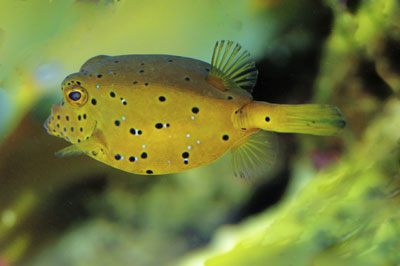
Boxfish
(ostracion cubicus)
Like any animal, the Boxfish needs to conserve its strength and move with the least possible consumption of energy, which requires powerful muscles and a streamlined shape. It must withstand high pressures and protect its body during collisions, which requires a rigid outer skin. And it needs to move in confined spaces in its search for food, which requires good manoeuvrability.
There is more to the boxfish than meets the eye: despite its angular body, it is an excellent swimmer whose cube-shaped structure is by no means a hindrance. On the contrary, the boxfish possesses unique characteristics and is a prime example of the ingenious inventions developed by nature over millions of years of evolution. The basic principle of this evolution is that nothing is superfluous and each part of the body has a purpose – and sometimes several at once.
The outer skin of the boxfish consists of numerous bony, hexagonal plates which are interlinked to form a rigid suit of armour. This bony, armour-plated structure gives the body of the fish great rigidity, protects it from injury and is also the secret of its outstanding manoeuvrability, as tiny vortices form along the edges on the upper and lower parts of the body to stabilise the fish in any position and ensure that it remains safely on course even in areas of great turbulence. It does not need to move its fins in the process, and can therefore conserve its strength.
Applied to automotive engineering, the boxfish is therefore an ideal example of rigidity and aerodynamics. Moreover, its rectangular anatomy is practically identical to the cross-section of a car body. And so the boxfish became the model for a so far unique automotive development project.
The first sub-project tackled by the engineers at the Mercedes-Benz Technology Centre and DaimlerChrysler Research concerned aerodynamics. In wind tunnels and water channels they examined how the attributes of the living model could be transferred to an automobile.
The results are impressive. Despite its angular structure, the boxfish has almost as good streamlining qualities as the water drop shape which specialists consider to be the standard for the ideal aerodynamic form. When exposed to an open flow, this streamlined shape has a Cd value of 0.04. Using computer calculations and wind tunnel tests with an accurate model of the boxfish, the Mercedes engineers achieved a value which came very close to this ideal, namely 0.06 – an outstanding result. It explains why the boxfish is such a good swimmer and is so manoeuvrable with minimal effort.
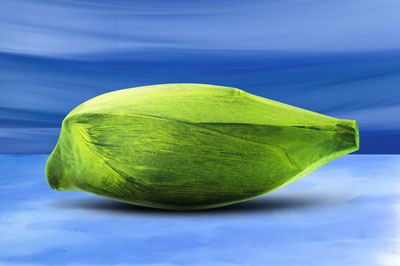
Wind tunnel model of a boxfish: Cd value 0.06
MERCEDES QUARTER SCALE MODEL
To make use of the aerodynamic potential the specialists in Stuttgart first created a 1:4 scale model car whose shape substantially corresponded to the
boxfish. The angular outside contours of the living model were adapted in the area of the roof and side skirts, as was the prominent, descending rear end with its heavily scalloped sides and pronounced wedge shape.
In doing this they were disobeying important principles in automotive aerodynamics, and were all the more surprised at the results: the Cd value for the car was 0.095. In aerodynamic terms it was just as good as the shape - as measured on the ground - considered ideal by aerodynamics specialists (Cd 0.09). Thus, the research model in the shape of a boxfish betters the drag coefficient of today’s compact cars by more than 65 percent.
The second round of the Mercedes-Benz bionic car project then commenced. The task was to develop a full-size, roadworthy automobile on the basis of the boxfish contours – a fully equipped model for four occupants, with typical Mercedes attributes in terms of safety, comfort, design and day-to-day practicality, and equipped with all the technology necessary for minimal fuel consumption and the best possible environmental compatibility.
The result of this unusual vehicle project was a compact car with two doors, four comfortable single seats, a panoramic windscreen, a glass roof and a large tailgate – 4.24 metres long, 1.82 metres wide and 1.59 metres high. Naturally the exacting requirements with respect to practicality, everyday suitability and design made compromises compared with the 1:4 model necessary, but the concept car still retains outstanding aerodynamic characteristics: with a Cd value of 0.19 the fully-functioning and driveable Mercedes-Benz bionic car is among the aerodynamically most efficient in this size category.
In addition to the boxfish-like basic shape, this result is made possible by a number of other aerodynamic features, e.g. rear wheels which are almost completely shrouded with sheets of plastic, flush-fitted door handles and the use of cameras instead of exterior mirrors.
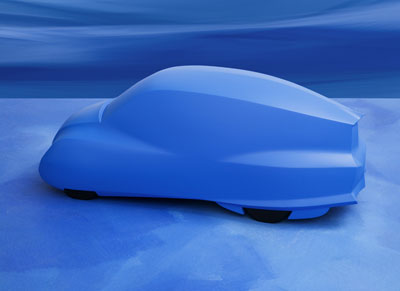
One of the most aerodynamic concept cars Mercedes-Benz bionic Cd 0.19
ENERGY CONSUMPTION
In the Mercedes study, the optimal aerodynamic properties derived from the boxfish and a new lightweight construction concept taken from nature create the conditions for a low fuel consumption and excellent performance. Equipped with a 103 kW/140-hp direct-injection
diesel engine, the concept car consumes 4.3 litres of fuel per 100 kilometres (combined), making it 20 percent more economical than a comparable standard-production model.
I was the Wright Brothers who first built a scale wind tunnel to test wing shapes. These series of tests gave them figures for lift per square inch against various shapes, at various speeds through the air, from which it was possible to calculate the size wing they would need to achieve flight for a given mass. The mass, being their body weight, engine, fuel and the frame, wings etc. That is how flight took off, if you'll pardon the pun.
WIND
TUNNEL TESTS
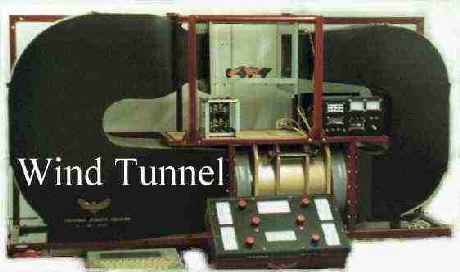
Closed
loop small scale wind tunnel measuring 1.5m X .8m
Bluebird
BE1 model in chamber
Please
click on the links above to find out about these famous automotive
makers. If your company is not included and you would like to be
listed, please let us know.
UK
VEHICLE INSURANCE ONLINE A - Z
Automotive
Prehistory Links
CONTACTS
A
taste for adventure
capitalists

SMARTCHARGER
- Potentially the world's fastest electric car: 400mph using energy from nature.
Featuring built in battery swapping system, charged using renewable
solar energy. A project in waiting in PR terms.
|







